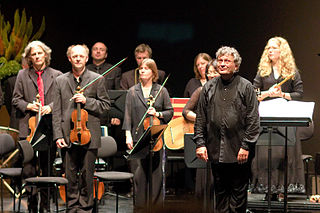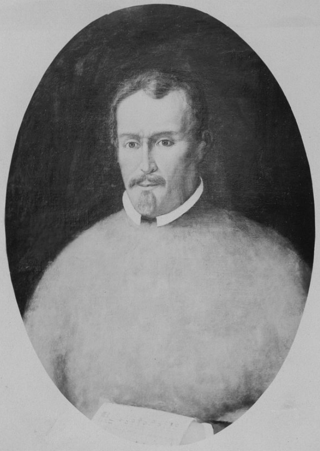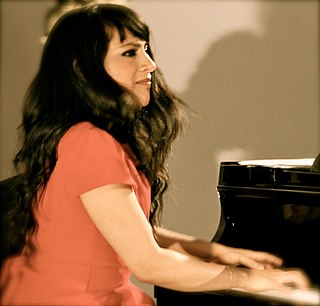Related Research Articles

René Jacobs is a Belgian musician. He came to fame as a countertenor, but later in his career he became known as a conductor of baroque and classical opera.
The Music of Andalusia encompasses a range of traditional and modern musical genres which originate in the region of Andalusia in southern Spain. The most famous are copla and flamenco, the latter being sometimes used as a portmanteau term for various regional musical traditions within Andalusia. Today, Andalusia has a rich and thriving musical scene, which draws from its own musical traditions as well as from external influences such as salsa, jazz or pop music.
Andalusī nūbah, also transliterated nūba, nūbā, or nouba, or in its classical Arabic form, nawba, nawbah, or nōbah, is a music genre found in the North African Maghrib states of Morocco, Algeria, Tunisia, and Libya but, as the name indicates, it has its origins in Andalusi music. The name replaced the older use of sawt and originated from the musician waiting behind a curtain to be told it was his turn or nawbah by the sattar or curtain man.

Luis de Pablo Costales was a Spanish composer belonging to the generation that Cristóbal Halffter named the Generación del 51. Mostly self-taught as a composer and influenced by Maurice Ohana and Max Deutsch, he co-founded ensembles for contemporary music, and organised concert series for it in Madrid. He published translations of notable texts about composers of the Second Viennese School, such as Hans Heinz Stuckenschmidt's biography of Arnold Schoenberg and the publications of Anton Webern. He wrote music in many genres, including film scores such as Erice's The Spirit of the Beehive, and operas including La señorita Cristina. He taught composition not only in Spain, but also in the U.S. and Canada. Among his awards is the Premio Nacional de Música.

Juan del Encina was a composer, poet, priest, and playwright, often credited as the joint-father of Spanish drama, alongside Gil Vicente. His birth name was Juan de Fermoselle. He spelled his name Enzina, but this is not a significant difference; it is two spellings of the same sound, in a time when "correct spelling" as we know it barely existed.
The Oxyrhynchus hymn is the earliest known manuscript of a Christian Greek hymn to contain both lyrics and musical notation. The papyrus on which the hymn was written dates from around the end of the 3rd century AD. It is on Papyrus 1786 of the Oxyrhynchus papyri, now kept at the Papyrology Rooms of the Sackler Library, Oxford. The manuscript was discovered in 1918 in Oxyrhynchus, Egypt, and later published in 1922.

Juan Bautista Comes, aka per Valencian spelling Joan Baptista Comes, was a Spanish Baroque composer who was born and died in Valencia.
The Diapason d'Or is a recommendation of outstanding (mostly) classical music recordings given by reviewers of Diapason magazine in France, broadly equivalent to "Editor's Choice", "Disc of the Month" in the British Gramophone magazine.

The Cancionero de Palacio, or Cancionero Musical de Palacio (CMP), also known as Cancionero de Barbieri, is a Spanish manuscript of Renaissance music. The works in it were compiled during a time span of around 40 years, from the mid-1470s until the beginning of the 16th century, approximately coinciding with the reign of the Catholic Monarchs.
The Trio Wanderer is a French piano trio made up of Vincent Coq, piano, Jean-Marc Phillips-Varjabédian, violin, and Raphaël Pidoux, cello, who graduated from the Conservatoire de Paris. In 1988 they won the ARD International Music Competition in Munich, and in 1990 the Fischoff National Chamber Music Competition in the US.

Pablo Heras-Casado is a Spanish conductor.

Javier Perianes is a Spanish classical pianist. He is a participant at many renowned festivals within Spain, including Santander, Granada, Peralada and San Sebastián. He has performed in distinguished concert series throughout the world, having made appearances in New York City's Carnegie Hall, Washington DC Concertgebouw Amsterdam, the Tchaikovsky Conservatory in Moscow, the Shanghai Conservatory, Madrid's Auditorio Nacional, Palau in Barcelona, recitals at the Ravinia and Gilmore International Festivals in Chicago, Festival de La Roque-d'Anthéron in France and the Konzerthaus in Berlin.
Eduardo Paniagua is a Spanish architect and musician, specializing in medieval Spanish music.
Huelgas Ensemble is a Belgian early music group formed by the Flemish conductor Paul Van Nevel in 1971. The group's performance and extensive discography focuses on Renaissance polyphony. The name of the ensemble refers to a manuscript of polyphonic music, the Codex Las Huelgas.

Shani Diluka is a Monegasque pianist of Sri Lankan descent. She was among those to benefit from a programme initiated by Princess Grace of Monaco, which allowed children to receive music lessons integrated into their schooling. She received the first prize in the Académie de Musique. She subsequently studied with Odile Poisson, a pupil of Pierre Sancan. Enrolled in the Conservatoire de Paris in 1997, she studied with Georges Pludermacher and François-Frédéric Guy and later with Marie-Françoise Bucquet, Nicholas Angelich and Bruno Rigutto.

Ars Musicae de Barcelona was a Catalan ensemble for the performance of medieval music active between 1935 and 1979.

Michèle Reverdy is a French composer.
Judith Anne Nelson, née Manes was an American soprano, noted for her performances of baroque music at the beginning of the "early music revival" of the 1970s and 1980s.
The Cancionero de Segovia or Cancionero Musical de Segovia (CMS), also known as Cancionero of the Segovia Cathedral, is a manuscript containing Renaissance music from the end of the 15th century and beginning of the 16th century. It contains a wide repertoire of works by mainly Spanish, French and Franco-Flemish composers. It is kept at the Segovia Cathedral Archives.
Concerto Vocale is a Belgian musical ensemble for baroque music.
References
- Atrium Musicae de Madrid at answers.com
- (in Spanish) ATRIVM MVSICAE
- (in Spanish) Discography